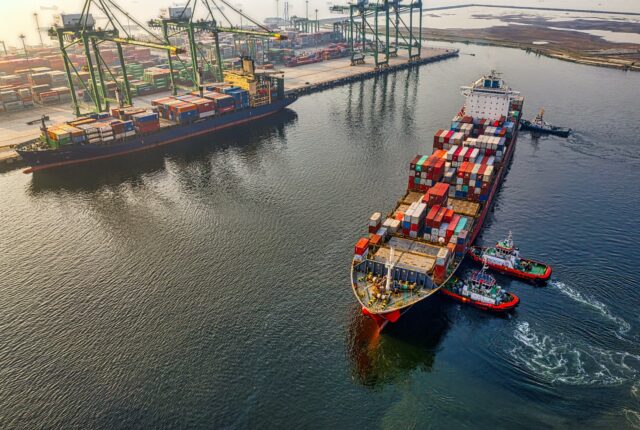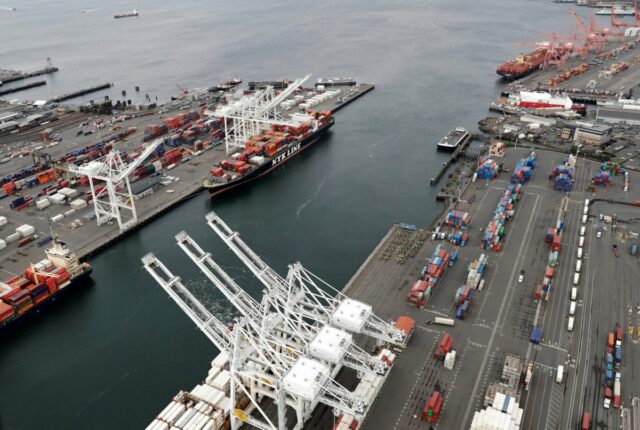
Predictive Analytics: Transforming Supply Chain Optimization in Freight
In the dynamic and fast-paced world of logistics, the freight sector stands out as a critical component of global trade. The efficiency and effectiveness of supply chain operations are paramount to the success of businesses involved in freight transportation.
Predictive analytics has emerged as a game changer, offering unprecedented opportunities for supply chain optimization. By leveraging advanced technologies like AI, machine learning, and big data, companies can foresee potential issues, optimize operations, and enhance overall efficiency.
Understanding Predictive Analytics
What is Predictive Analytics?
Predictive analytics involves the use of statistical algorithms and machine learning techniques to identify the likelihood of future outcomes based on historical data. It transforms raw data into actionable insights, enabling businesses to make informed decisions.
How Predictive Analytics Works
Predictive analytics processes large volumes of data to uncover patterns and trends. This data is then used to build models that predict future events. For instance, in the freight sector, predictive analytics can forecast demand, optimize routes, and predict maintenance needs for vehicles.
Key Technologies in Predictive Analytics
- Artificial Intelligence (AI): Enhances predictive models by simulating human intelligence.
- Machine Learning: Allows systems to learn and improve from experience without explicit programming.
- Big Data: Involves processing and analyzing vast amounts of data to extract meaningful insights.
The Freight Sector: An Overview
Definition and Components of the Freight Sector
The freight sector encompasses the transportation of goods by road, rail, sea, and air. It includes various components such as shipping lines, freight forwarders, trucking companies, and logistics providers.
Current Challenges in the Freight Sector
The freight sector faces numerous challenges, including fluctuating fuel prices, regulatory changes, capacity constraints, and the need for timely deliveries. These challenges necessitate the need for more efficient and reliable supply chain operations.
Importance of Supply Chain Efficiency in Freight
Efficient supply chain management is crucial for reducing costs, improving delivery times, and maintaining customer satisfaction. Predictive analytics plays a vital role in achieving these objectives.
Benefits of Predictive Analytics in Supply Chain Optimization
Improved Demand Forecasting
Predictive analytics enables companies to anticipate demand accurately, reducing the risk of overstocking or stockouts. This ensures that the right products are available at the right time.
Enhanced Inventory Management
By predicting future inventory requirements, businesses can optimize stock levels, reducing holding costs and minimizing waste.
Better Route Planning and Optimization
Predictive models analyze traffic patterns, weather conditions, and other variables to determine the most efficient routes, reducing transit times and fuel consumption.
Cost Reduction and Efficiency Improvement
Predictive analytics helps identify inefficiencies in the supply chain, allowing companies to implement cost-saving measures and improve overall operational efficiency.
Risk Management and Mitigation
By forecasting potential disruptions, such as delays or equipment failures, predictive analytics enables proactive measures to mitigate risks and ensure smooth operations.
How Predictive Analytics Transforms Supply Chain Operations
Real-Time Data Analysis
Predictive analytics processes real-time data to provide up-to-date insights, allowing businesses to respond swiftly to changing conditions.
Proactive Decision Making
With predictive analytics, companies can make proactive decisions rather than reactive ones, staying ahead of potential issues.
Automation of Repetitive Tasks
Predictive analytics automates repetitive tasks, such as scheduling and routing, freeing up human resources for more strategic activities.
Enhanced Customer Satisfaction
By optimizing supply chain operations, companies can provide better service to customers, ensuring timely deliveries and accurate order fulfillment.
Technological Integration and Tools
Key Software and Tools for Predictive Analytics
Several software solutions are available for predictive analytics, including IBM SPSS, SAS, and Microsoft Azure. Choosing the right tool depends on the specific needs and capabilities of the business.
Integration with Existing Systems
Successful integration of predictive analytics tools with existing systems is essential for seamless operation. This involves ensuring compatibility and interoperability with other software and hardware.
Overcoming Technical Challenges
Implementing predictive analytics can pose technical challenges, such as data integration and scalability. Addressing these challenges requires careful planning and the right technical expertise.
Steps to Implement Predictive Analytics in the Freight Sector
Initial Assessment and Goal Setting
The first step is to assess the current state of supply chain operations and set clear goals for what predictive analytics should achieve.
Data Collection and Integration
Collecting and integrating data from various sources is crucial for building accurate predictive models. This includes data from sensors, ERP systems, and external sources.
Choosing the Right Predictive Analytics Tools
Selecting the right tools and technologies is essential for successful implementation. Consider factors such as ease of use, scalability, and support.
Training and Development
Training staff on how to use predictive analytics tools is critical for ensuring successful adoption. This includes both technical training and training on interpreting and acting on insights.
Monitoring and Continuous Improvement
Once predictive analytics is implemented, continuous monitoring and improvement are necessary to ensure ongoing success and adaptation to changing conditions.
Challenges and Limitations
Data Quality and Availability
High-quality data is essential for accurate predictions. Poor data quality can lead to incorrect insights and decisions.
High Implementation Costs
The initial cost of implementing predictive analytics can be high, particularly for small businesses. However, the long-term benefits often outweigh the costs.
Security and Privacy Concerns
Ensuring the security and privacy of data is crucial, particularly when dealing with sensitive information.
Predictive analytics is revolutionizing supply chain optimization in the freight sector. By leveraging advanced technologies, companies can improve efficiency, reduce costs, and enhance customer satisfaction. The future of predictive analytics in the freight sector looks promising, with ongoing advancements and increasing adoption.
FAQs
What is predictive analytics in the context of supply chain management?
Predictive analytics involves using statistical methods and machine learning techniques to forecast future events and trends in supply chain management, enabling more informed decision-making.
How does predictive analytics benefit the freight sector specifically?
Predictive analytics benefits the freight sector by improving demand forecasting, optimizing routes, enhancing inventory management, and reducing operational costs.
Can small and medium-sized enterprises (SMEs) also benefit from predictive analytics? Yes, SMEs can benefit from predictive analytics by improving their supply chain operations, reducing costs, and competing more effectively with larger companies.






